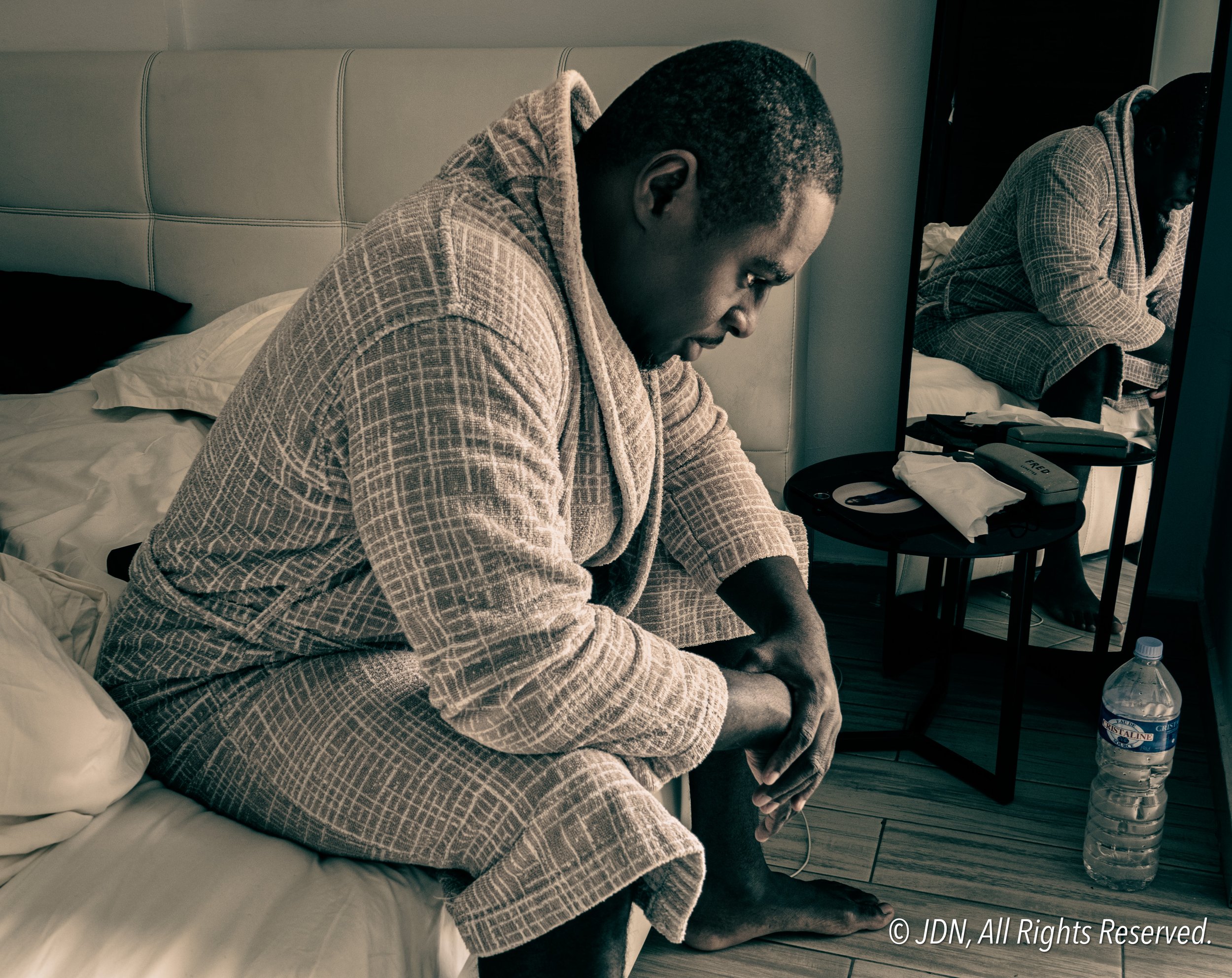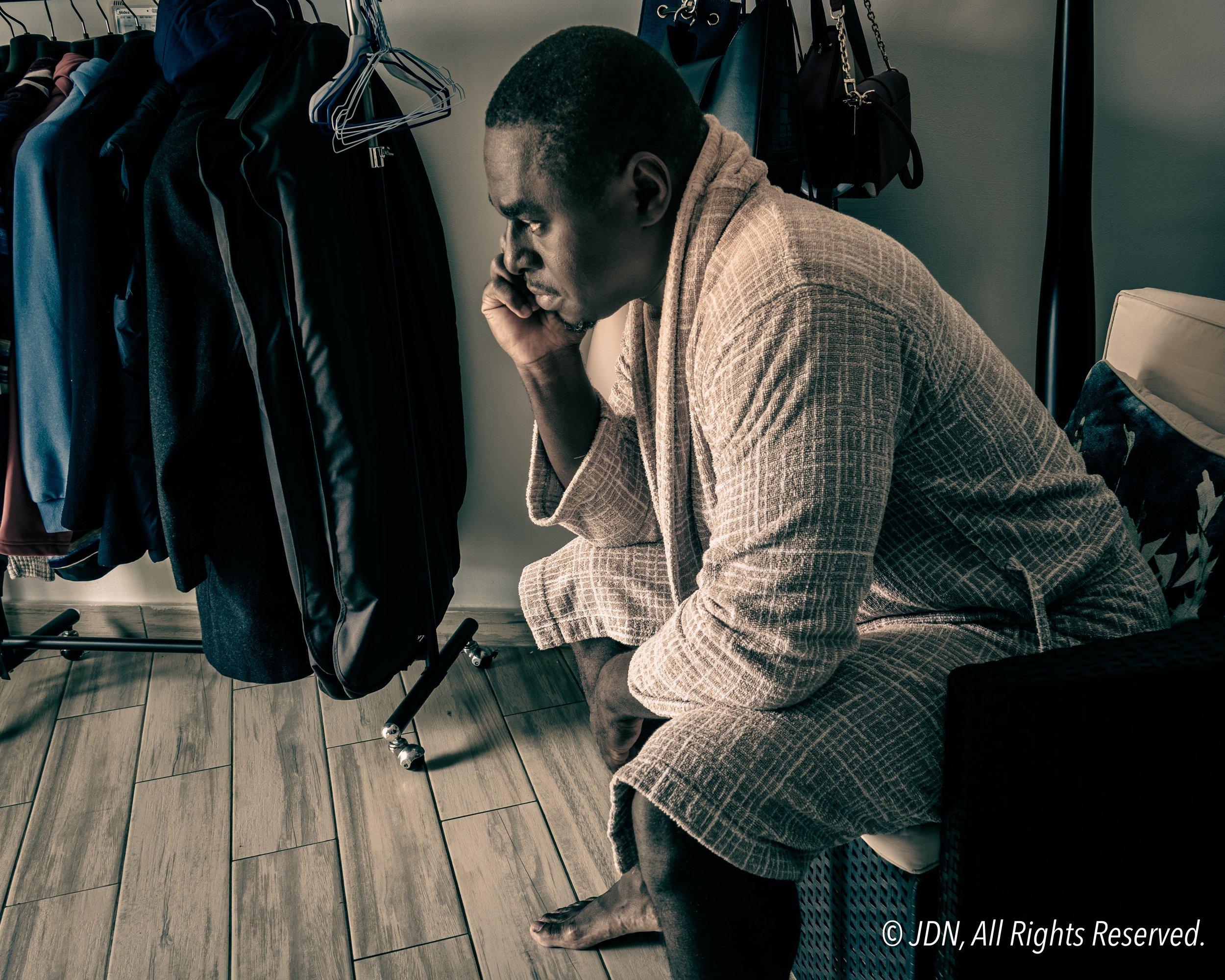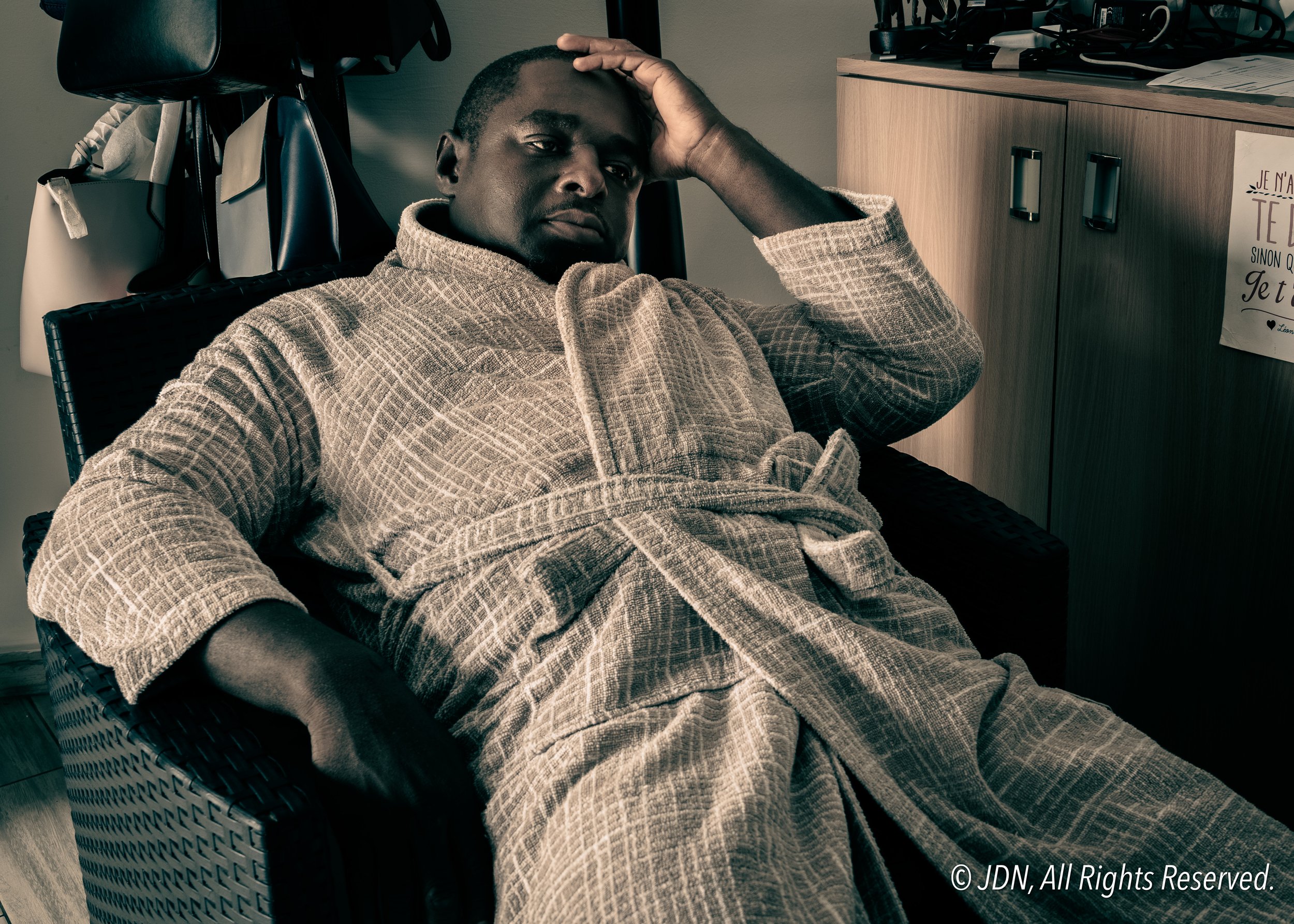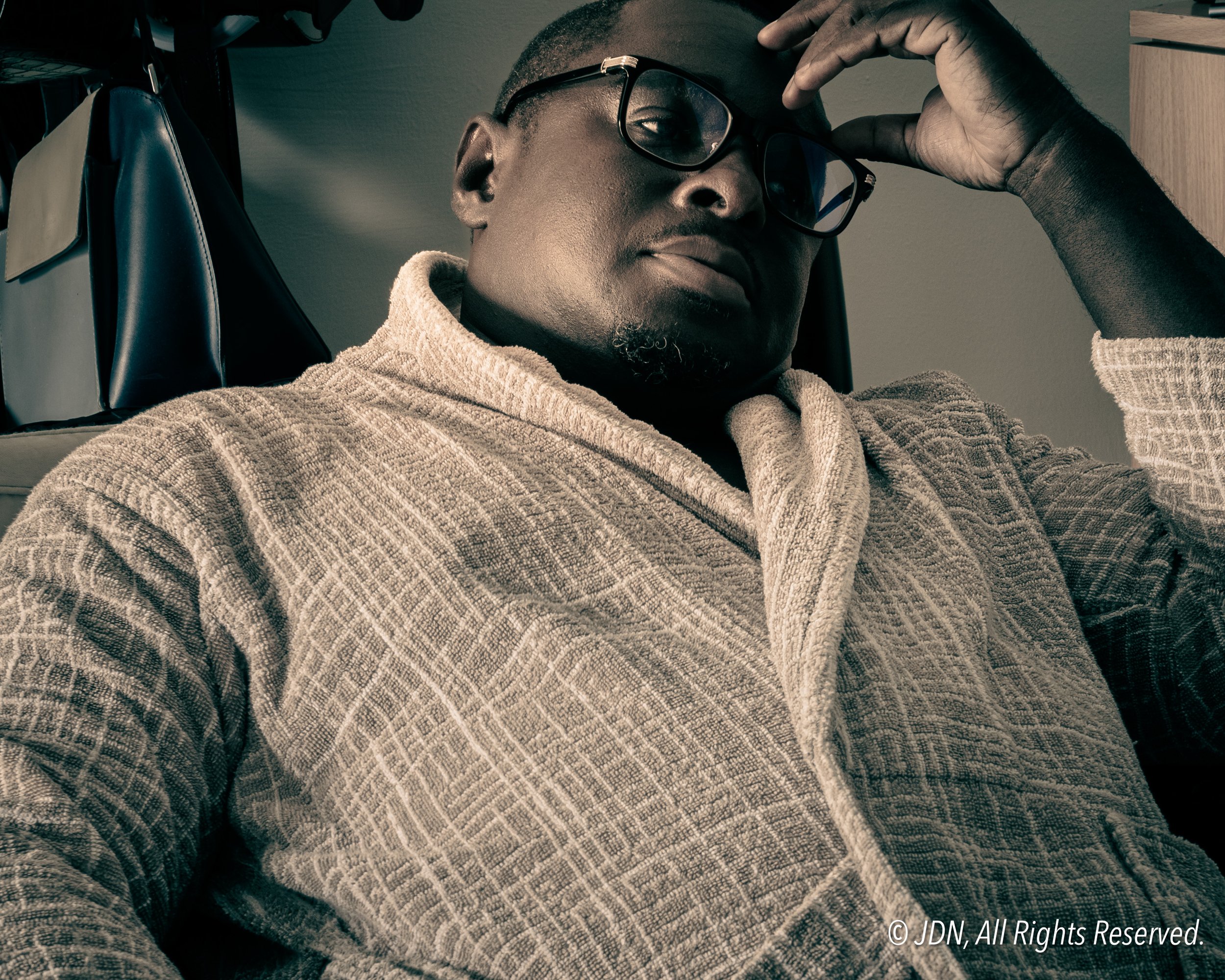PHOTO ESSAYS
KILOMBERO, Pts. 1 & 2 - A brief testimony of rural East African life as seen through urban West African eyes
Most people come to the island of Zanzibar, that part of Tanzania that sits deep in the Indian Ocean, for the breathtaking beauty of the landscape which encompasses incredible cocaine white sand banks, crystal clear cartoon-like turquoise waters, unbelievably fast tide changes and tasteful fruits straight from one of the many community oriented spice farms. And they should because Zanzibar is all that and much more, a proud African entity as clean as much of Geneva, where rush is unnecessary and security is confident enough for police officers never to be seen anywhere.
However, as a landscape photographer having already secured a few nice shots in the couple of weeks I spent on the island, I felt an urge, before I left, to look for that “much more” I had seen time and time again while I strolled around town, a “much more” visible in the faces of those who make all this natural beauty go unscathed: the people.
Watu Wa Zanzibar - “people of Zanzibar” in local Swahili - come in many shapes and forms as people from everywhere do, while most of them share a Muslim faith they do not otherwise feel the need to wear on their sleeves. I found these men and women to be mostly pleasant, tolerant, gracious and seemingly worry-free (besides the usual overzealous police officers at the airport), most of them ready to shoot a combinaison of "Jumbo", "Karibu" as well as the world famous "Hakuna Matata" to the tourists they meet every single day, for the land - somewhat of an independent state with its local governing entity within a non-federal country - thrives off tourism first and foremost. These greetings are usually followed by the classic "Where are you from ?" or the guessing of such, especially when they meet a dark skin fellow looking just like them, except for his professional camera gear which underlines his non-resident status.
So the curious in I strolled through a few areas of Zanzibar most tourists don’t bother to visit in order to capture moments of rural everyday life in places like Uzini and Kilombero, while constantly wondering, even there, far from tourists mainstays like Nakupenda Beach and Fumba Island, about the squeakiness of the area which stood in sharp contrast to the muddy, messy, overfilled streets of my native Côte d’Ivoire. My guide, Cool Rama, who was a professional local guide, private hire taxi driver and overall easygoing fellow, knew how to help maneuver the required diplomacy and friendliness - let alone the Swahili language - needed to introduce me to the locals I wanted to take photos of, always with their consent. Most of them, although startled and unprepared, were accommodating, while the rare "no's" I encountered were being offered firmly but gracefully, usually, I believe, for religious reasons I did not feel the need to judge. Still they mostly obliged and the results are these few pictures taken around Kilombero, most notably at Wizara Ya Elimu public school - itself an unexpected photo shoot which was allowed by the principal and the teachers on the spot, with no prior knowledge of my visiting and no requirement whatsoever, a kind, atypical gesture I would have had a hard time encountering in my own country.
Hence I dearly cherished these shots, average as they may be, for they were taken outside of my comfort zone, socially, culturally, geographically and, yes, technically, but still showcase a slice of rural East African life through my urban West African eyes.
BLACKBOI - This young pupil’s blank look seems expressive of some kind of uncertainty or concern despite his teacher’s devoted care —— Le regard lointain de ce jeune élève semble exprimer un certain degré d’inquiétude malgré le dévouement de son institutrice.
SCHOOLBOI - The look of disinterest or, even worse, distrust, on this schoolboy is all too revealing...—— Le regard de désintérêt ou, pire encore, de méfiance, présent sur le visage de cet écolier est parfaitement révélateur…
VIRGIN MARYS - Silent but striking capture of four high school girls whose various looks and attitudes speak for themselves —— Capture muette mais saisissante de quatre collégiennes dont les regards et postures variés parlent d’eux-mêmes.
DEVOTION - Few means but a lot of goodwill in this public school teacher who remains dedicated to the education and protection of the young pupils entrusted to her —— Peu de moyens mais beaucoup de bonne volonté chez cette institutrice dédiée à l'instruction et à la protection des jeunes élèves qui lui sont confiés.
PROF - A principal/teacher doing what he can with what he has —— Un directeur/enseignant faisant ce qu'il peut avec ce qu'il a…
HER - One slightly preoccupied kindergarden's teacher nonetheless proudly wearing her traditional khimar —— Une institutrice un tantinet pensive arborant tout de même son traditionnel khimar avec fierté.
MISTER MISTER - Memorable encounter with this self-taught French speaking Zanzibarian science teacher who, despite being fully dedicated to the education of his high school students (and going as far as giving them physics lessons outside the classroom with no textbook whatsoever), openly worried about the usefulness of his methods and his students’ overall focus because of the meagre resources at his disposal —— Rencontre mémorable avec ce professeur de sciences physiques natif de Zanzibar et autodidacte de la langue française qui, en dépit d’être entièrement dédié à l'éducation de ses élèves (au point de leur donner des cours de physiques sans livre, hors d’une salle de classe à proprement parlé), s’inquiétait ouvertement de l’efficacité de ses méthodes et du degré de concentration de ses élèves vu les maigres ressources mises à sa disposition.
BOYS TO MEN - Impassive, impatient, worried or uncertain, the faces of these proud Zanzibarians each evoke the range of feelings imposed on man, from the dawn of his carelessness to the twilight of his responsibilities —— Impassibles, impatients, inquiets ou incertains, les visages de ces fiers Zanzibariens évoquent, chacun, un pan de l'éventail des sentiments qui s'imposent à l'homme, de l'aube de son insouciance au crépuscule de ses responsabilités.
ALIVE - Remembering the purity in this little boy’s innocent gaze whose carefree joy exults despite the "bars" that seem to surround him —— Au souvenir de la pureté inscrite dans le regard innocent de ce petit garçon à la joie insouciante malgré les "barreaux" qui semblent l'entourer.
MOTHERHOOD - This young and proud mother clearly shows her desire to protect her baby from the walking artist with a curious lens —— Cette jeune et fière maman affiche clairement sa volonté de protéger son bébé de l'artiste baladeur à l'objectif curieux.
THE CRAFTSMAN - Greetings to this conscientious carpenter busy with the task despite the photographer on the lookout for his every move —— Salut à ce menuisier consciencieux affairé à la tache en dépit du photographe à l'affut de ses moindres mouvements.
NANA - The answer of this old lady from Kilombero to the question of having a superb portrait of hers taken was one of great surprise given her advanced age and the probable lack of attention paid to her on a daily basis. And yet... —— La réponse de cette vieille dame de Kilombero à la question se se faire dresser un superbe portrait était une de grande surprise vu son age avancé et la probable rareté de l'attention qui lui est portée. Et pourtant...
DOWNTIMES - A person is rarely beautiful…
We usually think of photography as a mean to convey beauty. And it is. However, it’s first and foremost a mean to convey memory. Fifty years after a photo has been taken of, let’s say, a young lady, her great-grandkids don’t look at it as to find out if she was pretty. They look at it as to find out, quite directly, if she was (to have proof of her existence) and how she was. They look at it to find out who she was...
A few days ago, a friend of mine showed me a couple of pictures of her mother when her mother was about 28 years old. What was special about these photos wasn’t that they were or were not beautiful; it was that they simply were, that they existed as testimony of the lady’s life at 28 because my friend never quite met her own mother: her mother passed away, not of sickness but of sadness, when she was 28, when her baby, my friend, was 4 years old. And these photos of her 28-year-old mother are all she has: they are all her mother ever was…
When I got into portrait photography a few months ago, I tried doing so in a bare bone home studio where I stressed over the spotless quality of the faces I was capturing while using one sided semi-professional lighting alongside Kobe, my dear camera. I wanted to take beautiful photos, meaning, crispy clean, well-arranged faces inside proper rectangles, regardless of the fact that these rectangles were or were not the truest representations of my models. Afterwards though, I came to learn that most of these photos, although lovely, were not the truest representations of my acquaintances and could not be, for the most part. Why? Because they represented the manufactured, ready-to-shoot-in-a-studio-under-ideal-conditions versions of these people. So the pictures I took were beautiful albeit somewhat lifeless. With a few exceptions, they weren’t particularly memorable…
The fact is, no one, not a single person is always beautiful. We, as human beings, have downtimes, moments when we wake up or go to bed with crumpled, worn out faces, moments when we feel sick, tired, stressed out, lonely, hurt, mad or just old, moments when our postures actually reveal every single one of these emotions. However, rarely do we use photography to capture these moments. And whenever we do, we tend to hide or delete them as quickly as possible because they’re not good-looking. Hence they tend to fade and disappear and what’s left is a collage of our lives’ best of’s: favorite, pretty, social-media-ready moments we love to share but which only tell the most flattering parts of our life stories.
Well, I have learned with my trying of portrait photography that downtimes, times when we feel our most vulnerable, actually make for the more realistic, faithful and timeless pictures, because they showcase us, as we are. Indeed, they rarely make for beautiful photos. But they make for honest photos. They represent who we truly are because they represent who we are most of the time: ourselves. And our selves, our true selves, not necessarily our best beautiful selves, are always memorable, just like my friend’s 28-year-old mother remains to her daughter: memorable.
So following are a few snapshots of my personal downtimes. I couldn’t find anyone to shoot (or willing to be shot) in these moments so I did what I never do, what I never enjoy doing: I shot myself. As a photographer, I don’t like shooting myself because I don’t like selfies, which I despise for what they say, specifically, of their compulsive takers. However, these photos are not selfies; they are self-portraits. They are photographic expressions of carefree moments, taken on a whim, with no artificial lights, no preparation, no dress code, no makeup, no forced smile or seductive posture, no willingness to appear as something other than what is. They are who I am more times than not, early on my way to 47, and they have been taken, like I try to do nowadays, for the simple photography of it all, with the little knowledge I have gathered, so far, of portraiture. Do I like them? Well, does it even matter? I know one thing: I like that they exist because they serve a purpose. A memory. A memory, possibly, for my great-grandkids to be...















